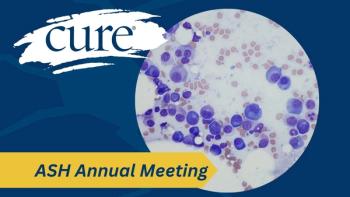
Multiple Myeloma Maintenance and Donna’s First Relapse
Cristina Gasparetto, MD, details typical multiple myeloma maintenance in comparison with Donna’s therapies, and Donna tells us about her first relapse with multiple myeloma.
Episodes in this series

Cristina Gasparetto, MD: We do everything to try to maintain your quality of life. The most common maintenance is lenalidomide by mouth at the low dose. Ixazomib, which is another pill, is also approved in these situations. Sometimes we use a double approach in patients with high risk. But the maintenance is not supposed to affect your quality of life. We’ll make adjustments based on your symptoms and your tolerability. That’s important. Maintenance can prolong your life. But we need to minimize the toxicity, of course.
I monitor my patients with blood work, every three months, to detect any changes if the protein appears. I do bone marrow to make sure that minimal residual disease is there. If a patient comes out of minimal residual disease but with no evidence of disease elsewhere, sometimes I manipulate. I adjust the maintenance so they can go back down to negativity. I like to do that. You mentioned that your remission was about a month shy of five years, right?
Donna Kidder: That’s correct.
Cristina Gasparetto, MD: Then what happens? How did you find out that your cancer had come back?
Donna Kidder: You’re not the only person who looks at the blood work. I study it on my chart all the time. I could see it trending upward. It finally reached a point where something had to be done.
Cristina Gasparetto, MD: You were not having symptoms. You would just monitor your blood work.
Donna Kidder: Yeah.
Cristina Gasparetto, MD: But you were feeling OK, you were still living your life, doing everything you needed to do.
Donna Kidder: Exactly.
Cristina Gasparetto, MD: Was it very stressful to look at the protein going up?
Donna Kidder: Yes, it was disappointing. I’d hoped that I would be one of the miracle children who made it 10 years. I remember my first treatment—the second treatment, if you will—was Kyprolis. My first day getting infusion, I was so disappointed because I didn’t feel like I should be there. Like it should have lasted longer. By the third time, I’d adjusted to the new routine. I really enjoyed the caregivers I had.
Cristina Gasparetto, MD: You adjusted to the therapy.
Donna Kidder: And it was responding quickly.
Cristina Gasparetto, MD: That’s always the problem, right? You’re disease-free or maybe on the maintenance, and you’re enjoying your life. The cancer returning can be even more stressful than your first diagnosis because you don’t want to start back. That’s the reason why I’m going back to the initial therapy. We really are changing. We’re becoming more aggressive because we want the first therapy to last as long as possible. Unfortunately, patients with myeloma, will relapse in different ways. Some patients are like you: no symptoms, but you see the protein rising. Sometimes, if the protein is rising slowly, the cancer is not growing very fast. And the patient does not have any symptoms.
We look for the CRAB [hypercalcemia, renal insufficiency, anemia, bone lesions] symptoms. If there’s no anemia or new bone destruction and the renal function is intact, you can take some time. For patients with not very aggressive myeloma that comes back after several years, you can buy some time. Treatment-free. However, my recommendation, when we see rising protein, is to make sure that the myeloma is not causing any damage. You have to repeat a lot of tests to make sure the bones aren’t destroyed, that you’re not spilling the protein anymore. We call that type of relapse the serologic, meaning it’s all in the blood.
But you don’t have symptoms yet. If you have symptoms, we need to start therapy right away. If a patient progresses rapidly after the initial therapy, we recommend to start therapy sooner because it’s a more aggressive myeloma. But if you progress slowly—many years after your transplant—we can buy some time. It’s always important to do the testing because you have to be aggressive with the second line of therapy. Remember, the initial therapy to transplant and the maintenance is one line. You’re going to a second line. Thank God, we have a lot of options. Our job, as your physician, is to choose the best option for you as an individual based on your age, your other medical issues, your presentation. Are you relapsing very quickly or slowly? What type of myeloma? We didn’t talk about cytogenetic and FISH [fluorescence in situ hybridization], but we know, based on the information, how aggressive myeloma can be. For some patients, we choose therapy based on convenience. Some patients don’t have the ability to travel.
This transcript has been edited for clarity.






